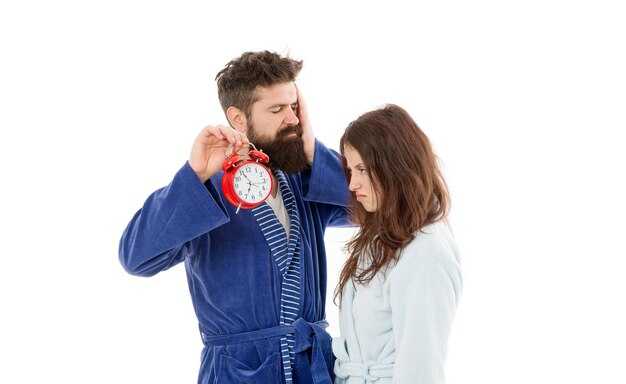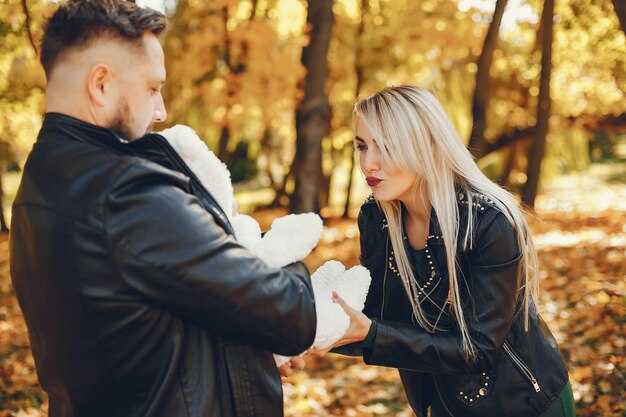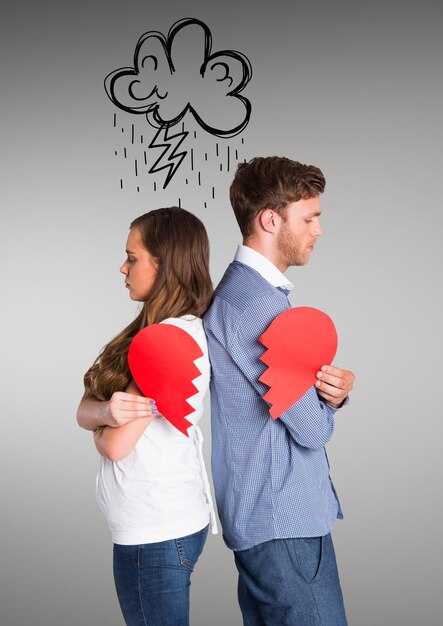The issue with romantic bonds—especially for people who experienced neglect or hurt in childhood—is how intensely attached we can become. Breaking up can feel catastrophic, almost like a part of you is being ripped away. Even when you don’t truly want the person, even when the relationship has been harmful, it’s common to have urges to return. Many of us have fallen into that trap, losing years in unhappy, stagnant partnerships because our attachment wounds make the agony of leaving unbearable. Sound familiar? Today’s letter comes from a woman who calls herself April, and she writes, “Dear Anna, I’d really appreciate your help working out whether what I’m feeling is just heartbreak or if it’s something else.” Okay—I’ve got my imaginary pencil ready to mark things worth revisiting, but first let’s take a careful read and unpack what’s happening here. April says, “I’m 42 and have a long history of unhealthy relationships. I’ve been in therapy for a few years and have done a lot of personal work, including watching material like yours. Through that process, I learned I’m fearful-avoidant and that I have complex PTSD stemming from my childhood. My mother was, and still is, extremely controlling and unpredictable. We grew up witnessing her abuse of my father, who was emotionally checked out and now feels like a stranger because of how disconnected he is. My mother would swing between smothering involvement and cold punishments or stonewalling us simply for being ourselves. We couldn’t speak back to her. There were many moments I needed emotional support and she shamed or abandoned me. She was wildly inconsistent. We were raised with strict religious expectations to always be kind and to show huge empathy for other people’s troubles. We were forbidden from showing anger or weakness; our feelings were often dismissed. Although we received practical attention and care, genuine affection was scarce. Our family was isolated from the outside world—insular, almost cultlike. As you can imagine, this left me with a host of issues I’m still working on, the main ones being anxiety and dissociation. Wow. I finally found the courage to come out as gay at 38, and after several relationships with men, I met my second girlfriend just over a year ago. It started off beautifully—how many of these stories begin that way? It’s true: I managed my own triggers at first, not running away even though I have an intense fear of being engulfed by relationships and of what they can take from me. When my girlfriend asked for space, I didn’t cling; I maintained my independence and insisted on moving slowly. Affection is hard for me, but I grew to love her kisses and hugs. You told me I was fearful-avoidant, and I want to address that because I see what you mean. You really want connection, yet you fear being swallowed up by closeness. Attachment styles sit on a spectrum: on one end is secure attachment—people parented well who form relationships naturally and steadily. On the other end are anxious styles, which show up in different ways. Some are avoidant, fleeing relationships and ending them impulsively; others are anxiously clinging, constantly seeking reassurance and fearing abandonment. Then there are people with a combination—disorganized or anxious-avoidant—who flip between desperate neediness and feeling overwhelmed by intimacy. That’s what our letter-writer describes: one moment begging for closeness, the next recoiling in fear of being engulfed. It’s confusing for partners and makes relationships very difficult. It’s one of the attachment patterns most important to work on if you want healthy partnerships. So, she told me her girlfriend seemed devoted and sweet. From the start, she said she wanted forever. Although April kept a critical head and wondered whether some of the attention was love-bombing, she began to open up. Her girlfriend met her off the bus, read to her in bed, handled her anxiety with care and supported her through struggles. They bought matching Christmas jumpers, went ice skating, endured a holiday delay with laughter—it was endearing. After about six months, though, they were out for drinks and the girlfriend suddenly stormed out of the bar. April couldn’t figure out why and followed her home. There, the girlfriend erupted: she was furious April hadn’t given her a key to the apartment yet. According to her, that meant April didn’t trust her or care about her feelings. She even used the fact that April had housed a male friend during lockdown years earlier as proof that April valued him more. When April stood her ground the girlfriend flipped the narrative, accusing April of humiliating her by forcing her to ask and making her angry. That level of aggression and manipulation was a huge red flag, and though April was shocked, she stayed, trying to keep boundaries and hoping it was a misunderstanding. But jealousy intensified and abusive dynamics settled into a pattern. The girlfriend repeatedly accused April of still desiring men, accused her of lying, implied she was promiscuous for talking to men, and even shamed her sexually—claiming April ought to give in because of things men had done to her. On another occasion, the girlfriend exploded because April used her given name instead of a pet name in front of friends, claiming it minimized their relationship. None of these things were deserved—though likely they sprang from the girlfriend’s own triggers. During these attacks April dissociated and found it hard to respond verbally; still, she never let herself be gaslit and could see the problem belonged to the other person. Knowing the girlfriend had severe childhood abuse, April felt sorrow that she couldn’t accept the love being offered. Between the cruelty, there were also tender moments. After thirteen months, following a final abusive incident, April ended the relationship and went no-contact. She knew staying in that toxic, codependent cycle would be harmful. It’s been a month, and recovery has been brutal. Initially she had severe panic attacks, felt physically ill and depressed, as if on the verge of a breakdown. The cognitive dissonance between the tenderness and the abuse is bewildering. She’s been diligent about self-care—allowing herself sadness without collapsing into self-pity, avoiding compulsive photo-gazing, processing through writing, and resisting the urge to contact her ex despite intense temptation. Fortunately she has great friends and is confident she did the right thing. Yet the pain is raw and nauseating. She still loves her ex despite everything, mourning the brief, beautiful moments she felt were taken away. She struggles with the finality and with the thought that she abandoned someone she felt it was her duty to love, even though she intellectually knows that thought is unhealthy. She’s proud of handling the relationship, breakup and aftermath responsibly—yet the emotional hurt refuses to be resolved by logic. She’s never experienced pain like this before. In previous breakups she fell into self-loathing when her ego was wounded, or she stayed in or rebounded to toxic people from a victim stance, or she walked away and dismissed partners more easily when tired of being hurt. Now she feels her old defenses have dissolved. She’s tried to act in a mature, healthy way, and the result is unbearable aching. Is this ordinary heartbreak? Is her suffering the price of allowing herself true emotional vulnerability—or is something else at work? How does one heal, and how long will it take? She’s feeling deeply unpleasant emotions and wants relief. Thank you. Signed, April.” April—okay. While no one can define a single “normal” grief for everyone, what she’s experiencing falls within expected reactions, especially since it’s only been a month. There’s a crude rule of thumb I once heard—rough and not universal—that emotional pain lasts roughly half as long as the relationship did. It’s not scientific and won’t apply to every situation (if you were with someone for thirty years, it isn’t a promise you’ll need fifteen years), but for shorter relationships that rough ratio can sometimes hold. The fact that you feel so much emotion may actually be a sign that you formed a real attachment, and it’s not unreasonable to still have feelings for someone you bonded with. What seems to have happened here is the beginnings of a trauma bond: cycles of kindness followed by cruelty, then tenderness again, which can create a powerful, almost irresistible attachment. Even animals can become helplessly attached to that hot-and-cold treatment—it’s an involuntary response. In a way it’s a quirk of our brains: inconsistent warmth and withdrawal can forge an even stronger bond than steady warmth. In the long run a consistently kind partner is healthier, but people who alternate between warmth and coldness can create premature, exaggerated attachments. That’s why, for those with attachment wounds, the recommended dating pace is very slow. Slowing down gives you time to avoid rushing into attachment. Sex, for example, can accelerate bonding; if you bring existing attachment wounds into a relationship, typical attachment-related problems will emerge quickly. If you manage to build a relationship where you truly understand the other person—know where they come from, whether they’re trustworthy, seen their less-flattering side and decided you can live with it—then you’ve got a better footing. This case is interesting and puzzling: how did the girlfriend hide this darker side for six months? How did the jealous, controlling behavior surface so suddenly? That must have been shocking. For people learning to date more safely, the advice is to move slowly and to get crystal clear on what you need before you start. Red flags become easy to ignore if you haven’t been explicit with yourself about what constitutes a problem. Many people have heard stories of overlooking obvious warning signs—people can rationalize or gloss over troubling behavior. Later on, with clearer boundaries, it becomes easier to say, “I will not be with someone who has a drug problem,” or other non-negotiables—especially when past experiences have taught them they have blind spots that lead to serious consequences. Use guardrails: write down where you tend to be vulnerable, what types of harmful patterns creep into your relationships, and the signs you’ll watch for. Decide how soon in a relationship you’ll ask certain questions to check if you’re on the same page. A person’s dark side is revealed over time; sometimes it’s obvious right away, other times it takes months. When someone does act out badly, pay attention to how they own it—can they acknowledge their behavior? Is there accountability and real hope for change? People with attachment wounds often spot potential where there is little capacity for real change; we excel at loving the possibility of who someone could be and then feel perpetually disappointed by who they actually are. Part of healing is restoring accurate perception that trauma may have warped. A first exercise in many dating programs is clarifying what you want in life and in a partner. Many people struggle with naming their needs because trauma has taught them that asking for too much is greedy or unreasonable. Once you can honestly list what matters, it’s much simpler to see when someone fails to meet the bar and to notice red flags more quickly. To speed healing in this domain you’ll also need practical tools and a system—whether that comes from a therapist, a structured dating course, coaching, or recovery groups. Systems help you recognize patterns and chip away at them so you can change and face the truth about your choices. There are even 12-step-style programs for relationship issues; those are systems too. Having a framework to follow makes self-honesty easier, which is crucial. Equally helpful are trusted peers on a similar healing journey—people who are not potential partners but fellow travelers who understand the work. You can tell them, “I’m going on a date; I want to take it slow,” and they can hold you accountable to your parameters. Mutual support is incredibly powerful. Trauma survivors aren’t typically great at figuring this out alone, but with others walking the same path, improvement is much more likely. Be selective about who you let into your circle of advisors: choose people who share your values and who won’t simply cast blame outward but will help you examine your own patterns and support change so you can get different results—possibly with very different partners. Trauma profoundly affects how we date, how we perceive love and how we cope with conflict. There are common signs that trauma is shaping your romantic life. If you’d like, you can download a free PDF list I’ve put together of common indicators that trauma is impacting your relationships. It’s available right here. See you soon. [Music]



 Attachment Styles and the Pain of Ending Toxic Relationships">
Attachment Styles and the Pain of Ending Toxic Relationships">

 Relationship Experts say THIS leads to most Break-ups!">
Relationship Experts say THIS leads to most Break-ups!">
 Why Avoidants Are Never the Same After You Leave (And Why They Always Come Back) | Mel Robbins">
Why Avoidants Are Never the Same After You Leave (And Why They Always Come Back) | Mel Robbins">
 THIS causes Relationships to "Self-Destruct"">
THIS causes Relationships to "Self-Destruct"">
 Have you settled for a FALSE version of LOVE?">
Have you settled for a FALSE version of LOVE?">
 Here’s How You Know It’s Time to Tell Him You’re Into Him">
Here’s How You Know It’s Time to Tell Him You’re Into Him">
 How to know when to LEAVE your Relationship">
How to know when to LEAVE your Relationship">
 7 Signs an Avoidant Partner Is Preparing to Leave (The Final One Hurts Most)">
7 Signs an Avoidant Partner Is Preparing to Leave (The Final One Hurts Most)">
 Why Relationships Only Work When You Have Boundaries (4-Video Compilation)">
Why Relationships Only Work When You Have Boundaries (4-Video Compilation)">
 Relationships are DOOMED without THIS!!">
Relationships are DOOMED without THIS!!">